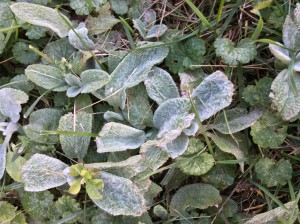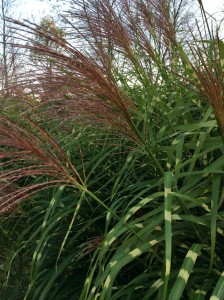All plants found on September 16, 2014 in Mount Gilead (northern Morrow county).
Stachys byzantina:
- Commonly known as Lamb’s Ear.
- Family Lamiaceae
- Native to America
- Habitat: This plant has grown directly on the south side of my house for as long as I can remember. It’s a slightly shaded area with good drainage and woody shrubs in close vicinity.
Commelina communis:
- Commonly known as Asiatic Dayflower
- Family Commelinaceae
- Native to eastern and southeastern Asia but introduced to eastern North America and is now a noxious weed
- Habitat: I found this particular plant growing in the cracks of cement steps that lead to the front porch. It also grows behind my house under the deck and beneath the shade of a coniferous bush near the barn. It seems to like very well shaded areas that are moist.
Micanthus sinensis:
- Commonly known as South American Elephant Grass
- Family Poaceae
- Native to eastern Asia but was introduced to America and is now invasive
- Habitat: This plant grows in my front yard. The drainage is good, and the area is very well lit. No other plants grow in the immediate vicinity, possibly due to the invasive nature of this plant.
The C. communis really threw me for a loop because it’s growing next to some ivy, and I confused the leaves of the ivy with the leaves of the Asiatic dayflower. Identifying characteristics include two large blue petals with one very small white petal in the center. This distinguishes it from the Virginia dayflower, which has three blue petals. Furthermore, the Asiatic dayflower has a weak stem and tapering, lance-shaped leaves.
Also here’s a picture of a ladybug. Not sure what the flower is, but I like this picture, so I’m sharing it.




